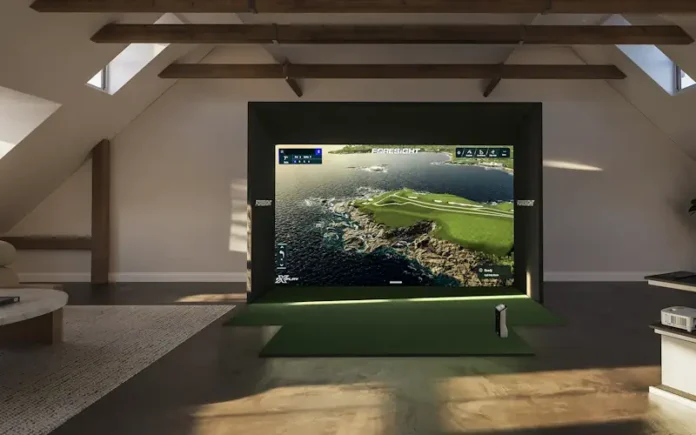The idea of bringing the golf course home is no longer a dream reserved for the elite. In 2025, home golf simulators are more accessible, more advanced, and more customizable than ever. Whether you’re looking to sharpen your swing, play famous courses, or enjoy a realistic golf experience year-round, finding the right simulator can transform your game — and your home.
But with so many options on the market, how do you choose the perfect one? Let’s break down everything you need to know to make a smart investment.
Understanding the Modern Golf Simulator Landscape
The Technology Has Leveled Up
Gone are the days when simulators were little more than glorified video games.
Today’s systems use high-speed cameras, radar tracking, infrared sensors, and detailed simulation software to create an incredibly lifelike and data-rich golfing experience.
More Options Than Ever Before
Whether you have a spare bedroom, a garage, or a full home theater space, there’s a solution available.
From portable nets with basic tracking to full enclosures with 4K graphics, the variety of setups means there’s a golf simulator for sale to match almost any need and budget.
Key Factors to Consider Before Buying a Golf Simulator
1. Space Requirements
Start by assessing your available space.
At minimum, you’ll need about 10 feet in width, 15 feet in depth, and 9 feet in height to comfortably swing a driver. Higher-end setups often require more room for enclosures, projectors, and ball flight tracking.
2. Tracking Technology
Different simulators use different tracking methods:
- Radar-based systems (like TrackMan) are highly accurate outdoors and in larger indoor spaces.
- Photometric systems (like SkyTrak) work better indoors with limited space.
Choosing the right tracking type ensures accurate data based on your environment.
3. Display and Projection Options
Some simulators use simple nets and tablet screens, while others project full-course visuals onto impact screens.
If immersion matters to you, investing in a quality projector and screen can dramatically enhance the realism of your simulator.
4. Software and Course Library
The software determines what courses you can play, what games or drills are available, and how realistic your practice sessions feel.
Top systems come with world-famous courses and regular updates, while entry-level options might offer fewer choices.
5. Budget and Future Expansion
Golf simulators can range from $2,000 to over $50,000.
Set a realistic budget, but also consider scalability — can you add features later, like better screens, mats, or software upgrades as your needs grow?
Popular Types of Golf Simulators for Different Players
Best for Beginners: Entry-Level Simulators
If you’re just starting, an affordable launch monitor paired with a net is a simple way to practice indoors.
These setups are portable, easy to store, and still offer swing data like ball speed and carry distance.
Best for Serious Golfers: Mid-Range Complete Systems
For those wanting detailed feedback and immersive play, a mid-range simulator with a high-quality mat, impact screen, and multi-course access offers the best value.
These setups balance realism, analytics, and cost effectively.
Best for Luxury Buyers: High-End Enclosures
If space and budget aren’t an issue, full enclosures with integrated lighting, environmental controls, and ultra-realistic 4K graphics provide a professional-grade experience.
These systems often include advanced swing analysis tools, virtual tournaments, and online coaching integrations.
Tips for Buying a Golf Simulator in 2025
Test Before You Buy
Whenever possible, visit a showroom or demo facility to try different systems.
Experiencing the visuals, swing feel, and tracking accuracy firsthand can prevent buyer’s remorse.
Read Reviews and Compare Features
Look beyond brand names — pay attention to the quality of tracking, realism of the graphics, and reliability of customer service.
User reviews and expert comparisons are invaluable when choosing the right model.
Plan for Installation and Maintenance
Factor in installation costs (if any) and make sure you understand what’s required for maintenance and software updates.
A little planning upfront saves headaches later.
Final Thoughts
Choosing the right golf simulator in 2025 is about more than just price — it’s about matching the technology to your goals, space, and lifestyle.
With the right setup, you can enjoy professional-grade practice, thrilling course experiences, and the pure joy of golf year-round — all without ever leaving home.

